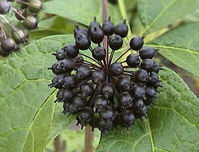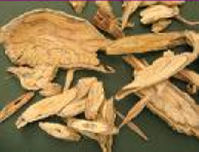Siberian ginseng
Eleutherococcus senticosus (also known as Acanthopanax senticosus or Ciwujia (China), and Siberian ginseng) is an approximately two-meter high, hardy shrub native to the far eastern areas of the Russian taiga and the northern regions of Korea, Japan, and China.
Just like the real Ginseng, Siberian ginseng is considered an 'adaptogen' because it normalizes body functions and can be taken for all body systems. The active ingredients of this plant are typically concentrated in the root and mainly consist of chemically distinct glycosides called eleutherosides.
Eleutherosides I, K, L, and M have also been identified and isolated from the leaf of the plant. These last constituents are thought to increase stamina and to stimulate the immune system.
Introduction
Eleutherococcus is primarily known as an adaptogen. Adaptogenic herbs help the body adapt to stress from both internal and external sources. They function to raise resistance to physical, chemical or biological stresses and boost cell recovery, thereby returning the body to a normal balance.The use of this herb dates back about 2000 years and has a history of improving longevity, energy, and stamina. It was 'rediscovered' in 1855 in Siberia just north of China's Amur River. In traditional Chinese medicine, it is used to reinforce "Qi" and invigorate the function of spleen and kidney.
It appears that Siberian ginseng improves both mental alertness and attention to detail. It has been noted in many studies to improve endurance and increase overall energy in many athletes. Siberian Ginseng has shown promise in both the relief of stress and decreased incidence of stress related diseases, by improving circulation and normalizing blood pressure. Long-term use of this herb has been shown to reduce the rate of infection. Unlike many herbs with a beneficial use, Siberian Ginseng is more useful for maintaining good health rather than treating ill health.

|
Photo: Siberian ginseng is a shrub that grows 3 - 10 feet high. Its leaves are attached to a main stem by long branches. Both the branches and the stem are covered with thorns.
The root itself is woody and is brownish, wrinkled, and twisted. |

|
Photo: Flowers, yellow or violet, grow in umbrella-shaped clusters, and turn into round, black berries in late summer. Ginseng Berries contain many of the constituents found in the root of the plant. Still, the berries are normally not processed. |

|
Photo: Siberian ginseng supplements are made from the root. The root contains a mixture of components called eleutherosides. |
Application
Siberian ginseng is available as liquid extracts, solid extracts, powders, capsules, and tablets, and as dried or cut root for tea.As well as internally, Siberian Ginseng can be used externally: it can be found in some facial moisturizer/treatment, anti-aging cream, hormonal cream, shampoo, and in conditioner. Siberian Ginseng works well as a facial cream because of the polysaccharides it contains: these help form a film on the skin that will tighten and smooth the skin immediately.
Beneficial for:
See website from EFSA for possible allowed health claims:http://ec.europa.eu/nuhclaims/?event=search
Industrial application
There is no evidence that Siberian Ginseng is used for any purpose other than as a food component or in cosmetics.Dosage
Siberian Ginseng is neutral energetically and so is appropriate for long-term daily use. Siberian Ginseng can be taken with or without food.For an optimum therapeutic dosage, it is advised to take 2-4 grams of the dried root daily. In practice 500-3000 mg of the dried root is most often used.
For standardized extract powder with 0,8-1,0% eleutherosides B and E the optimal therapeutic dosage is 600-1200 mg powder per day. For preventative use 200-400 mg powder is advised quite often.
For an optimal therapeutic effect of products for external use it is advised to add 2-3% concentrated extract powder with 0,8-1,0% eleutherosides content.
For a cosmetic effect it is recommended to apply a minimum of 3-6 gram of the Siberian ginseng extract powder (0,8-1,0% eleutherosides) per kilo product.
Contra-indications
In general, (side) effects from Siberian ginseng are rare and milder than those that occur from American and Korean ginseng. Siberian ginseng appears to be very safe at recommended doses. However, it should not be taken without consulting a doctor, by those with high blood pressure, obstructive sleep apnea, narcolepsy, or by women who are pregnant or breastfeeding. With very high doses, insomnia, nervousness, irritability and anxiety have been reported. Diabetics should monitor blood glucose levels and adjust medication accordingly.Most commonly reported (reversible) side effects include:
- High blood pressure;
- Drowsiness;
- Vomiting;
- Headache;
- Confusion;
- Irregular heart rhythm;
- Nosebleed.
More information / news
Copyright © 2011 Benseng Foodsupplements BV, Veghel, The Netherlands. See: www.benseng.nl
 |
 |
| previous | next |
